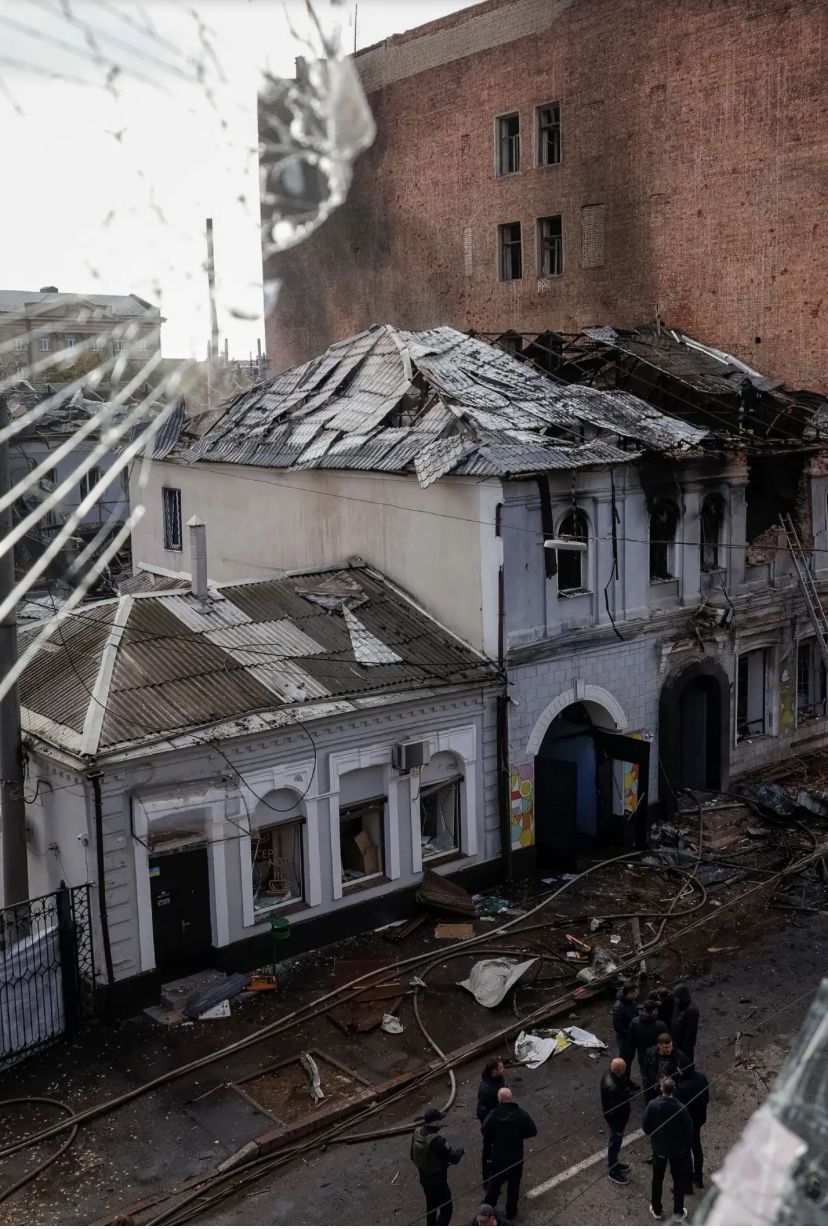Massive attacks on the power grid and the school follow diplomatic collapse over Russia’s territorial demands.
Russia launched a devastating wave of drone and missile strikes across Ukraine on Wednesday, killing at least six people, including two children, and triggering emergency power outages nationwide. The assault, which hit critical power plants and a kindergarten, came just hours after a planned peace meeting between U.S. President Donald Trump and Russian President Vladimir Putin was postponed indefinitely.
The scale and timing of the attack—which targeted infrastructure in Kyiv, Kharkiv, and other cities—directly followed the announcement by the Trump administration that no summit would take place “in the near future.” The reason for the postponement was Moscow’s refusal to agree to a U.S. request to halt fighting along the current front lines. Ukrainian President Volodymyr Zelenskyy immediately linked the renewed violence to the diplomatic failure, stating, “Another night proving that Russia does not feel enough pressure to stop the war,” and reiterated that Russian words about peace “mean nothing” as long as the Kremlin is not facing “critical problems.”
The military offensive immediately followed the collapse of President Trump’s efforts to broker a swift truce. The meeting in Budapest was shelved after the U.S. administration insisted on a commitment from Moscow to cease hostilities along current front lines, a request the Kremlin flatly refused.
President Trump later told reporters he postponed the talks “to avoid wasting time on unproductive talks,” but confirmed he would continue to pursue his peace goals. The core disagreement remains the fate of the occupied territory: Moscow confirmed it has no plans to give up the territories it captured, a stance which President Zelenskyy firmly rejected, stressing that Ukraine “will never sign away our land.”
The strikes inflicted “extensive damage” on energy infrastructure in regions across the country, aiming to cripple Ukraine’s power system as the cold season approaches. In addition to the energy sites, civilian areas suffered direct hits; authorities in the eastern city of Kharkiv confirmed that a Russian drone struck a kindergarten, while in the Kyiv region, the tragic death toll included two young children whose bodies were found in a burned-out home.
In response to this escalation, President Zelenskyy renewed his urgent plea for the West to supply Ukraine with long-range weapons, specifically referencing the Tomahawk cruise missile. He argued that the greater Ukraine’s capacity to strike Russian military targets deep behind the front, the more leverage Kyiv will have in future negotiations.
Internationally, the attacks drew swift condemnation, particularly from European capitals that have consistently backed Kyiv. The European Union reiterated its full support for Ukraine’s territorial integrity and demanded an immediate ceasefire.
Looking ahead, the diplomatic focus shifts to Washington, where President Trump is scheduled to meet with NATO Secretary-General Mark Rutte later this week to discuss ways to restart peace talks and coordinate increased pressure on the Russian Federation. The failure of this highest-level diplomatic track ensures that the war’s continuation will be marked by sustained military tension and a difficult humanitarian outlook for Ukrainian civilians.





